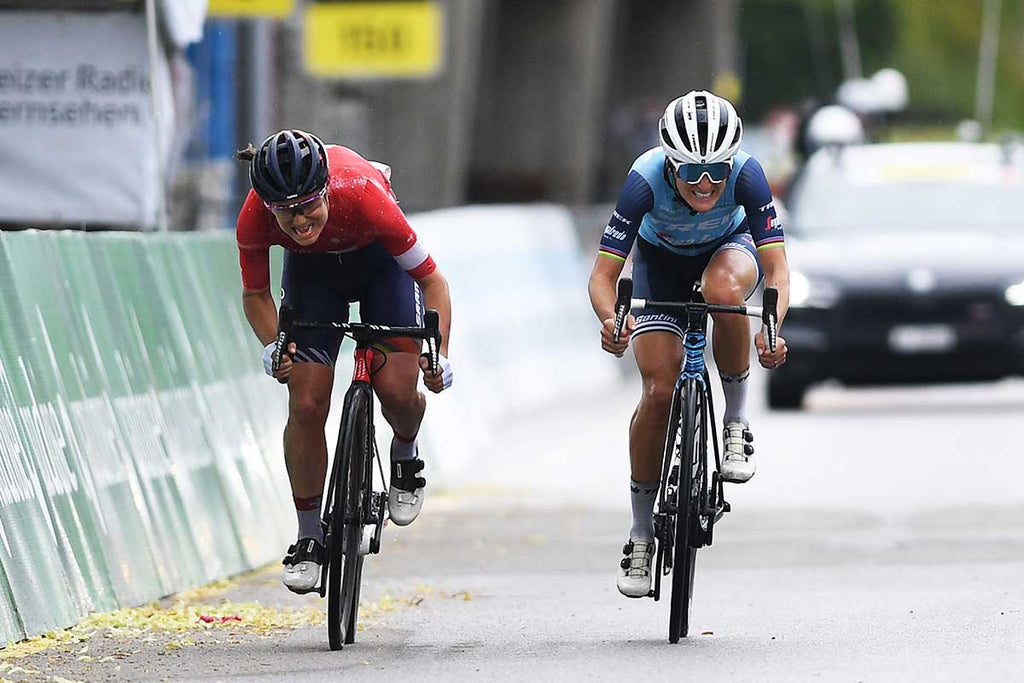The first time up the hill felt easy. But then, like a chicken slowly roasting in an oven, my legs baked. And if the fourth and fifth reps were the end of my panache, the last three were a grind to survive.
Undoubtedly, the 20-25% incline I chose for my hill reps didn’t help, but that’s what it’s like to cycle in Cornwall. You’ve got to make a virtue of necessity.
Related — Rouleur Performance: Could I be a pro cyclists? Testing Team BORA-Hansgrohe scouting protocol.
But I know too well that these high-torque, slow-cadence repeats are the bread-and-butter of cycling prowess. And they’re some of the best sessions for improving your cycling fitness. So I suck it up.
What I don’t know, and what I keep asking myself while riding up and down the rugged Millook hill (900 metres; average gradient 12%; max 21% – if you avoid the 30% bend!), is exactly what torque is. Why do we mention it often but seldom use it as a training metric? Why don't we use it as much as power and heart rate? Should we?
What's torque?

Photo: Getty Images
In physics and mechanics, torque is defined as the rotational equivalent of a linear force. In cycling, that corresponds to "the rotational force that applies to the pedals during each pedal stroke. And the calculation would be the force applied to pedals by the crank length," says John Wakefield, performance coach for UAE Team Emirates and managing partner of Science2Sport.
On the other hand, power – in physics – is the energy applied in a specific unit of time (or force by speed). Hence, your power meters calculate power output (watts) by taking into account torque and cadence. “That’s why if a cyclist can improve the amount of torque they’re able to produce at the same cadence, then they should improve their power and also for a longer duration,” says Wakefield, who's also coaching New Zealand's George Bennet.
Related: Bennet on Roglič versus Pogačar and his move to UAE from Jumbo.

John Wakefield (left) with Marco Marcato (right). Photo: John Wakefield archive.
In other words, if you see your power reducing over a 10-minute interval, what is reducing is first the torque (the force) that you’re applying to your pedals. In this specific case, when your torque reduces, also your cadence does. But there are instances where a high torque is also associated with a high cadence, like in sprints. However, the aim of the sessions described below is to have a high torque (high force) combined with a low cadence and maintain the same level of both throughout the intervals.
As a result, when you’ll have developed functional strength and you’ll have worked on torque improvement, you'll also be able to maintain the same amount of power for longer.
Related — Rouleur Performance: Three cycling strength training mistakes, and how to avoid them.
Benefits for cycling

Photo: Getty Images
We've heard numerous times in cycling about high-torque, low-cadence sessions, over-gearing efforts and hill reps. We presume that they develop functional bike strength, build muscles and give us strong legs. And while that’s true, that's only part of the picture.
"The most beneficial benefit from these sessions is developing neuromuscular pathways between the brain and the muscles, which are essentially your communication channels," explains Wakefield.
Related — Rouleur Performance: How pro cyclists test their fitness, with UAE Team Emirates.
These connections are between your brain, your motor neurons and your muscles. They provide an essential pathway between the brain and muscles, which is more critical than having strong legs.
The other goal of the sessions, says Wakefield, is to increase your Newton metres (Nm) of torque at threshold value and increase your torque value for a lower rate of perceived exertion (RPE).
The best session to improve your torque

Photo: Getty Images
Wakefield uses different variations of sessions but says that the most proficient are interval sessions of 4 or 10mins, with the number of reps and specific cadence and power ranges based on your fitness.
"You can add some variations to that, like a 30sec sprint at the end of the 4mins,” he says. “Or, in the 10mins, you can do a 30sec sprint every 2mins.”
Related — Rouleur Performance: What is HRV, and do you need it for cycling?
Of course, for less-trained cyclists, the rationale is to start low and then build up. That means, perhaps paradoxically, when it comes to cadence you should start at a higher revolutions per minute (rpm) and gradually decrease it.
"If you’re not used to it, a cadence of 30-40rpm typically results in sore knees or sore joints. That’s just because the cadence is too low and the Nm of torque is too great," says Wakefield. "I would say if it's a 10min duration, aim for 50 to 55 rpm to start with and then work your way down as your pathways are developed. Some athletes who have been doing this for years are doing 30-35rpm for the 10mins."
Related. Rouleur Performance. Sit-stand efforts: what are they and why you need to fit them into your training schedule.
Wakefield also stresses that he doesn’t give a power range for these intervals, but only Nm. Most coaches, he says, still rely on power for high-torque sessions, and even for recreational riders power is still more used and popular than torque.
Other considerations

Photo: Getty Images
There’s more than one way to prescribe accurate torque sessions, of course. Nicholas Willsmer, Lecturer at the University of Bath, says that he’d also link the lower cadence and high-torque sessions to either RPE or Critical Power (FTP or Anaerobic Threshold).
"You could prescribe torque-based sessions that derive from power data – and W' data [which, in technical terms is the work capacity above the Critical Power] – and that means you could individualise the training," he says. "Because you know, if you want them to push 300 watts, and their critical power is 250, that's over the Critical Power and will deplete a proportion of W′ over a specific time frame."
Related — Rouleur Performance: Are ketones changing pro cycling?
Willsmer says he would prescribe the session based on how much W' he wants to deplete; or – in other words – how much power above the threshold he wants his athletes to stay at. And then, he would prescribe a specific cadence to target that power output or RPE (based on previous workout history).
He also adds that he uses blocks of specific torque work within a training plan and that athletes and coaches alike need to be careful with them. "You have to be careful in terms of the interval-based work and what other things you mix into the programme," he says. "It's demanding on an athlete, and you need to be cautious about how much of the high-end you prescribe in the week."
Related — Rouleur Performance: Next level fuelling.
Indoors or outdoors?
Photo: Zwift
This decision depends on many variables, including time of the year, periodisation and weather. However, Wakefield prefers outdoors because “it has more specificity to real-life conditions”.
If you do end up doing hills reps outdoors, Wakefield points out that you need at least a 4-5% gradient to produce some resistance, then it’s up to you to perform it where you'd feel comfortable turning your pedals over and still enjoy a quality session.
Related — Rouleur Performance: Elsabetta Borgia, Team Trek-Segafredo's sports psychology.
Willsmer agrees. "It tends to be more about the duration of the hill and the length of it rather than the steepness," he says.
So, if you're looking to improve your strength and neuromuscular pathways, some grinding is the way to go. Torque sessions will bring your cycling fitness to a whole new plane – probably an inclined one.






























